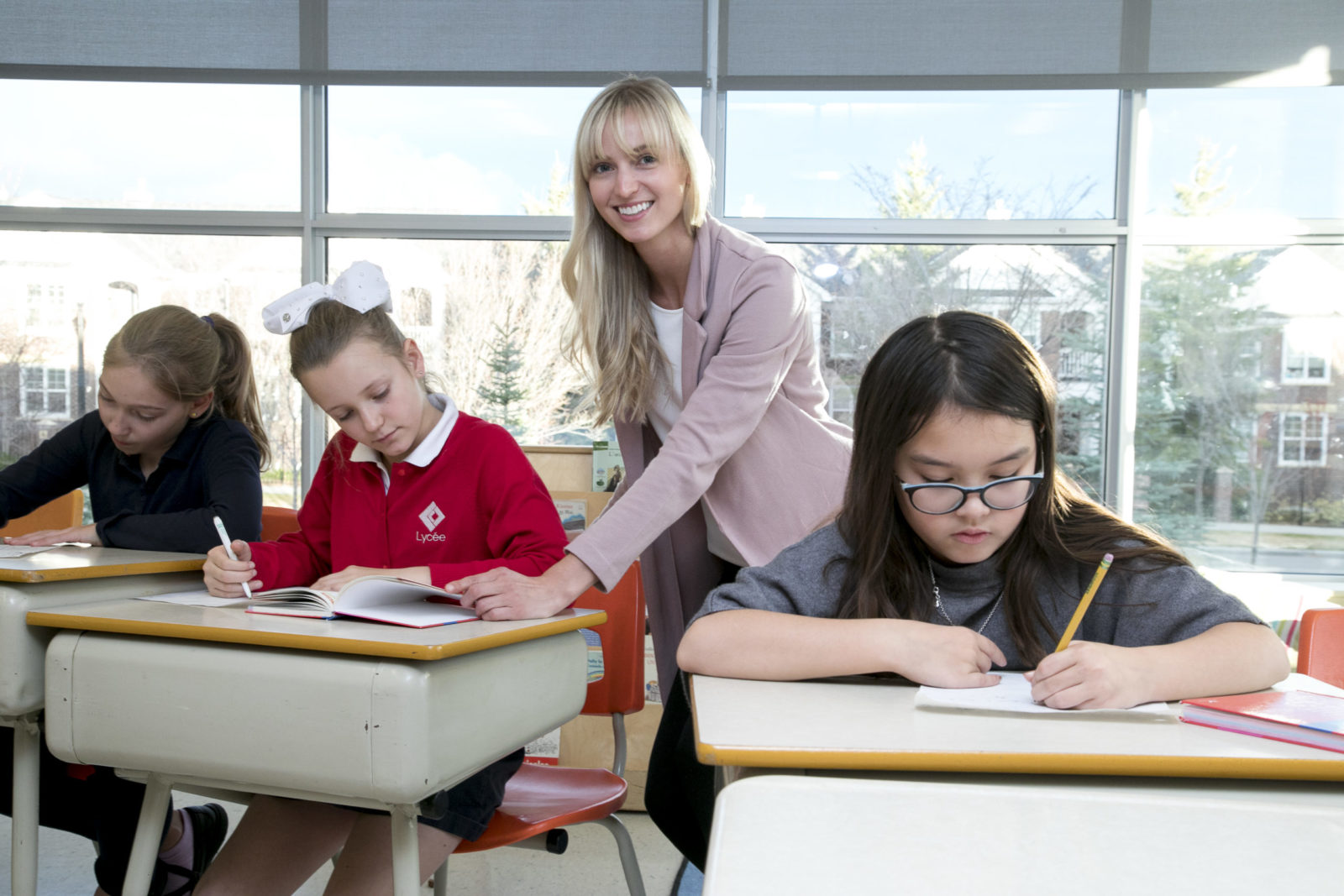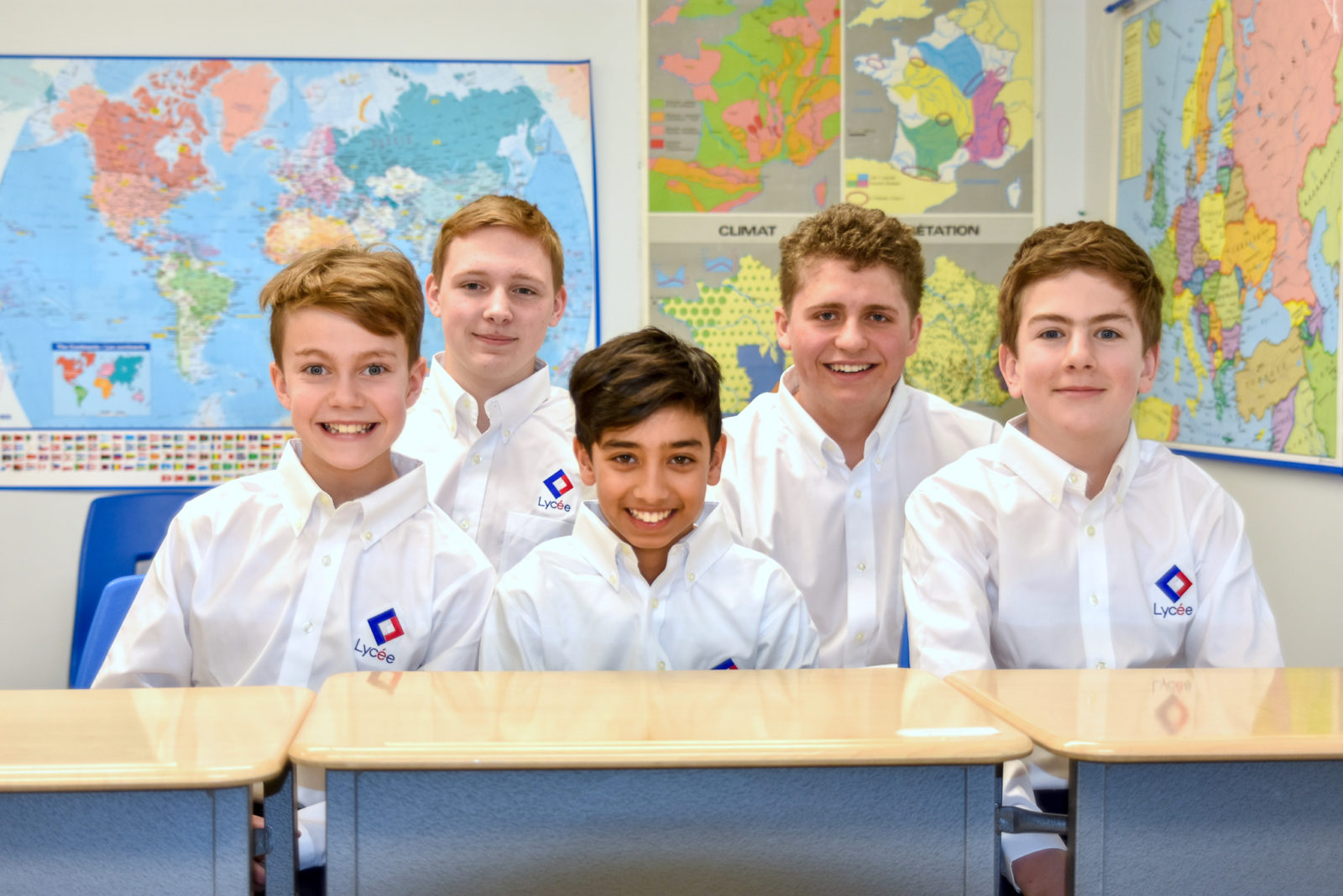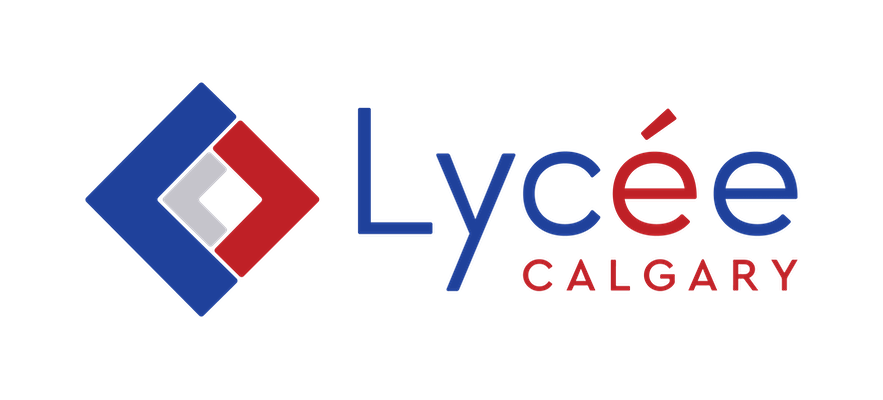During Junior High, students transition from a class-based program to a subject-based program and prepare for the Provincial Achievement Tests, written in Grade 6 & 9) and the Brevet Exams (Diplôme National du Brevet), written at the end of Grade 9.
JUNIOR HIGH PROGRAM
During Junior High (Grades 6 to 9), students transition from a class-based program to a subject-based program curriculum. The Junior High Program is taught by a team of teachers, each specialized in one or more subjects.
Our expert teachers collaborate across classrooms and subjects to coordinate their lessons in creative ways. This allows our students to make connections between subjects and better retain learned topics and further develop their mental acuity via non-linear thought processes. The curriculum consists of the following subjects: French, English, Mathematics, History and Geography, Sciences (Biology, Geology, Technology, Physics and Chemistry), Social Studies, Spanish, Arts and Visual Arts, Music and Physical Education.
Students are challenged to demonstrate understanding and application of knowledge as well as encouraged to explore new ideas, solve problems, and analyze information. Time management skills and self-sufficient study habits are instilled throughout these grades to prepare students for greater autonomy and independent critical thinking.


SPANISH
Spanish is added to the curriculum in Grade 6. Students have two to three hours of Spanish class each week and instruction focuses on both language and culture. The course is taught by a Spanish speaker and further develops students’ abilities to acquire and apply key language skills.
THE BREVET AND ALBERTA PROVINCIAL ACHIEVEMENT TESTS
Junior High (Grades 6 to 9) prepares students to write the Brevet Exam in Grade 9 and Alberta Provincial Achievement Tests in Grades 6 and 9.
Lycée students are prepared for success in varied testing methodologies including:
• Multiple-choice testing (the primary method employed by Alberta Education and by most post-secondary institutions in Canada and the US)
• Essay-type questions (the primary method employed by the French Ministry of Education)
Students benefit from the best each approach has to offer and develop critical thinking skills.


FIELD TRIP ABROAD
As part of the Lycée’s Junior High Program, Grade 8 students are encouraged to participate in a field trip abroad. The trip is designed to broaden their horizons and, whenever possible, allow them to experience a French-speaking culture first-hand. The cost of the trip is the responsibility of the parents and is announced at the beginning of the year.
Frequently Asked Questions
What classes are taught in French in the Junior High Program?
Math, Physics, Chemistry, Biology, History & Geography, French Language Arts, Civic Education, Technology and Music are taught in French according to the French Ministry of Education and Alberta Education curricula.
How many hours of English do students receive in the Junior High Program?
In the Junior High Program, students have between 9 and 11 hours of instruction in English per week. Social Studies, English Language Arts, Physical Education and Art are taught in English according to the Alberta Education curriculum by English speakers.
How many hours a week do students have for physical education, music, and art?
Depending on the grade, students receive 2 to 4 hours per week of Physical Education, as well as 1.5 to 2 hours of Music and Art.
Can my child enroll in the Junior High Program if we have not attended the Lycée?
If your child has attended a school in France, or an AEFE network school, they can attend our Junior High Program.
If they have not attended an AEFE network school, or a school in France, applications will be reviewed on a case-by-case basis, and may require testing and trial days to ensure student success.
Learn more about our Junior High Program by contacting our Admissions Team directly.
Can my child enroll in the Junior High Program if we have no prior French experience?
Unfortunately, as the majority of our courses are taught in French, we cannot accept students without prior French experience in the Junior High Program.
Does the Junior High Program have a dress code?
Yes, Junior High students are required to follow the school dress code outlined below:
• Plain navy or dark grey tailored pants, shorts, skort, tunic or skirt
• Plain white, red or navy top; polo, collared or pullover shirts ONLY (no stripes, designs or other embellishments)
• Plain navy or dark grey sweater – optional
• Navy, gray or white socks or tights
• Footwear – indoor shoes to be left at school; navy or black with non-marking soles and a heel not to exceed 2.5 cm.
Testimonials
“We were looking for a full time preschool program that was academically focused and that could challenge her (our daughter)… We toured a lot of schools in our city and we went on a tour for the Lycée and it really just clicked for us. We are an English speaking household and to receive a bilingual education was kind of a forefront for us.”
Kirsten W.
Lycée’s parent
“(We like) The sense of community, the diverse and dynamic level of education from art and music to science and math, the beautiful, warm and stunningly designed library, and the unique opportunity for our child to have a gateway to the world with the baccalaureate diploma. It is hard not to cry whenever we attend a Lycée event or activity as I just feel so grateful to be able to provide our child with a well-rounded, well-nurtured and well implemented education and future.”
Katy C.
Lycée’s parent
“For me, the favorite thing about school is more of my daughter’s favourite thing about the school. She really loves her teacher, who is incredibly supportive and caring and she loves the after school activities. There is a wide variety of after school activities from cooking to art class to circus.”
Ian M.
Lycée’s parent

